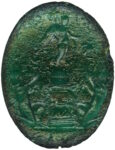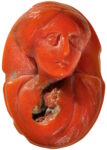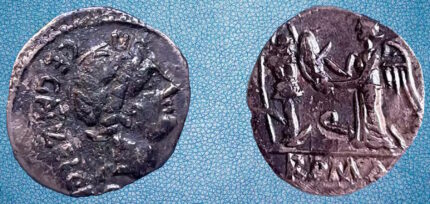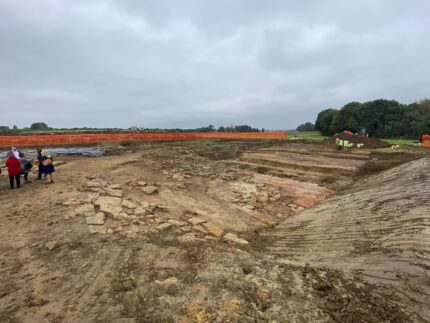
 Archaeologists have unearthed 50 intaglio gemstones and 3,000 coins, including one rare piece from the Roman Republic, in the remains of a theater at the ancient Roman town of Claterna, in Ozzano dell’Emilia, near Bologna. The gems are engraved with images of deities and important structures, including the theater where they were discovered. The stones were locally produced, suggesting there was a workshop in the city that specialized in intaglio production.
Archaeologists have unearthed 50 intaglio gemstones and 3,000 coins, including one rare piece from the Roman Republic, in the remains of a theater at the ancient Roman town of Claterna, in Ozzano dell’Emilia, near Bologna. The gems are engraved with images of deities and important structures, including the theater where they were discovered. The stones were locally produced, suggesting there was a workshop in the city that specialized in intaglio production.
The stand-out coin from the thousands is a quinarius, a silver coin of the Roman Republic dated 97 B.C. The obverse features a laureate head of Apollo and is inscribed with the name of the moneyer, C. Egnatuleius. The reverse features a winged Victory adding a shield to a trophy. A carnyx, symbol of Gaul, leans to the left. “ROMA” is inscribed beneath. This is a representation of Rome’s military victory over the Cimbri who had swept over the Alps from Gaul to invade northern Italy. They clashed with the forces of the formidable Roman general Gaius Marius at the Battle of Vercellae in 101 B.C. The Cimbri were annihilated — 100,000 warriors dead, women killing their children and then themselves, the few thousands who survived enslaved.
The Roman city of Claterna, less than 200 miles southeast of Vercellae, was founded on the site of an Etruscan-Celtic settlement in the first half of the 2nd century B.C. Its location at the crossroads of two major Roman roads — the Via Aemilia and the Via Flaminia Minor — brought it a constant stream of travelers and trade. It was elevated to the rank of municipality in the 1st century B.C., the first example of urbanization and the largest city in the area for centuries after. It was home to several luxury villas as well more modest dwellings, industrial glass and metalworking facilities and mansios (post stations along the Roman roads where official travelers could get food, lodging and fresh horses). In its heyday, the city covered an area of 30 hectares not counting the suburbs.

It was targeted by repeated barbarian raids in the calamitous 3rd century and gradually became depopulated until it was finally abandoned at the beginning of the 6th century. Its ruins were buried under farmland and its location forgotten, making it a rare example of a Roman urban center that was never built over. The first excavations began in 1891, uncovering the remains of roads, baths, sewers, bronze artifacts and the mosaic floors of grand villas. These discoveries were reburied for their protection. A systematic program of large-scale excavations began in 2005 and is ongoing today to explore what is the largest non-stratified archaeological area in Northern Italy.

